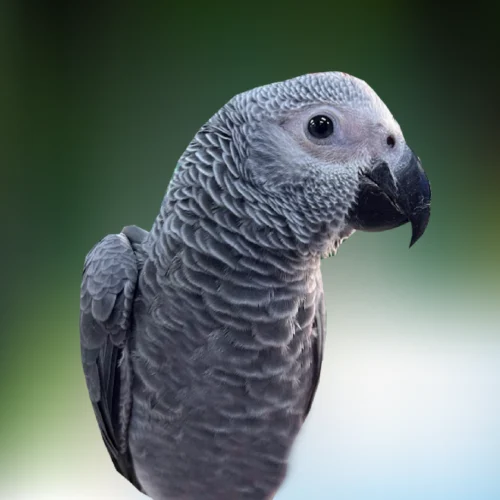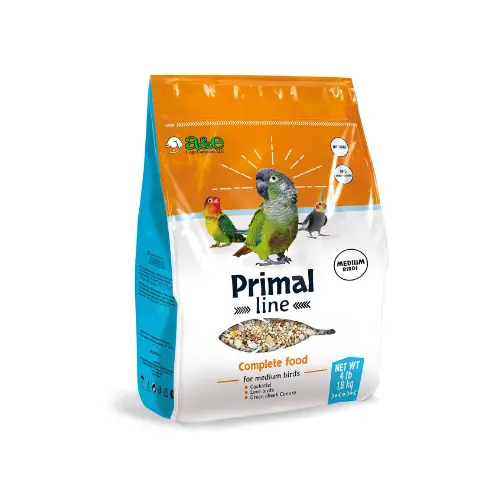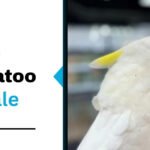

Grey Parrot Birds full care and lifespans
Grey parrot birds bring a special charm to any home just as guinea pigs can add warmth and companionship. These amazing pets, often called african grey parrot or african gray parrot come from the wild corners of central africa including the ivory coast. Known for their stunning grey plumage and sharp intelligence they stand out among pet birds. you are a new keeper or a seasoned bird lover these avian friends can make all the difference. Let’s explore what makes them so unique.
What Are Grey Parrot Birds?
Talking about grey parrot birds opens up a fun world These african greys, or african gray parrot, are native to west and central africa. They belong to the psittacus erithacus species, a name that hints at their rainforest roots. Living in tree cavities and forest edges, they form flocks and roost together in smaller groups. Oil palm and palm nuts are their favorites to munch on. Sadly, habitat loss from clearing has hit them hard, threatening their natural nesting sites where they would lay two to four eggs. Still, their ability to mimic sounds keeps them popular. As intelligent bird companions, they thrive with enrichment like perches and toys. Ready to learn more about these clever pets?
African Grey Congo
1 in stock
Introduction to African Gray Parrot
Starting with the african gray parrot, you’re meeting one of the smartest birds in the world. This grey parrot bird comes in two subspecies: Congo and Timneh, both of which are popular avian choices among bird enthusiasts. Found in places like kenya and cameroon, they’ve adapted to lowland forest edges. Bird breeders love them for their monogamous nature and ability to incubate four eggs. Sadly, the pet trade and international trade have caused a rapid decline, listing them as endangered by the international union for conservation of nature. They’re a treasure worth protecting!
Physical Traits and Habitat
Looking at the african gray parrot, you’ll notice its sleek grey plumage with a scarlet tail on some. Their beak is strong perfect for cracking palm nuts. These grey parrot birds weigh about a pound and reach up to 13 inches tall. In the wild they nest in tree cavities across central africa. Roosting in treetop spots, they forage for maize and fresh kale. Habitat loss from clearing threatens their forest edges pushing them to adapt or move to new roosts, which impacts their ability to court and leave the nest, similar to the challenges faced by guinea pigs in captivity.
Features of Grey Parrot Birds
Diving into the key features of grey parrot birds, you’ll see why they steal the show These african gray parrot pals are known for their amazing ability to mimic. Their grey plumage hides a highly intelligent bird brain making them stand out among pet birds. In the wild, they roost in tree cavities and flock together, showing off their gregarious side. Enrichment like perches keeps them happy just as tunnels and toys do for guinea pigs. Back home they love a good perch to play on. Originating from west and central africa, their rainforest habitat shapes their social nature. Pepperberg’s studies even highlight their smarts, reinforcing why they are one of the most beloved parrot species. Whether it’s their beak working on palm nuts or their chatter filling the room, these avian friends like guinea pigs, bring joy. Ready to hear more about what they can do?
Ability to Mimic Human Speech
Checking out the ability to mimick human speech in grey parrot birds is pure fun, similar to how guinea pigs can respond to their names. The african grey parrot can copy words and whistles with ease, showcasing their ability to mimick sounds. This talent comes from their highly social species nature, learned while roosting together in the wild. Bird owners often teach them phrases, turning playtime into a chat session. Studies show their intelligence and ability to mimick shine here. From rainforest flocks to your living room, their mimick skills never fail to impress, just as the playful antics of guinea pigs do!
Intelligence and Learning Skills
Exploring the intelligence and learning skills of grey parrot birds is eye-opening, especially in studies conducted by Pepperberg. The african gray parrot solves puzzles like a pro, thanks to its sharp mind. In central Africa, they forage and adapt, showing off as the smartest birds in the world, often engaging in courtship displays that involve two to four eggs. Keepers use enrichment toys to boost this trait. They can even pluck out tunes or recognize patterns. Living in tree cavities, their brainpower helps them thrive. It’s no wonder they’re a hit with bird lovers, especially those interested in the taxonomy of parrot species!
Benefits of Owning Grey Parrot Birds
Having Grey Parrot birds, like the African Grey, brings color and energy to everyday life. These intelligent pets love companionship, often mimicking sounds that spark laughter and keep conversations lively. Native to West and Central Africa, from Ivory Coast to the Congo, they thrive in flocks and display fascinating courtship habits. At home, they enjoy perches, toys, and foraging for treats like palm nuts, showing off their natural instincts. Their striking grey feathers with bright tails add beauty to any space. Known for monogamous bonds, they form deep connections, much like guinea pigs paired together. Though they require attentive care, their affection and playful nature make them wonderful companions. With the right environment, they become chatty, entertaining friends who brighten homes with personality and joy. For parrot lovers, the happiness an African Grey brings is truly worth the effort.
Companionship for Daily Life
Companionship for daily life with grey parrot birds is a treat, as they thrive in environments where they are kept by humans. The african grey parrot loves being around people, turning quiet moments into lively ones. Their ability to mimic human speech adds a personal touch, like a feathered buddy chatting back. From central africa’s forest edges, they bring a social vibe to your space. Whether you’re working or relaxing, their presence lifts your mood. With a perch nearby, these parrot species are happy to hang out all day.
Mental Engagement Through Play
Mental engagement through play keeps grey parrot birds thriving, just as it does for playful guinea pigs. The african gray parrot shines as a highly intelligent bird with toys for enrichment. In the wild, they forage and roost together, so puzzles or palm nuts keep their minds sharp. Owners notice they pluck less when busy. A good play session with a keeper boosts their happiness. It’s a simple way to bond and watch their smart side shine!
How to Care for Your Grey Parrot Birds
Learning to care for Grey Parrot birds, like the African Grey, is a rewarding journey that blends fun with responsibility. These intelligent pets need a cozy setup inspired by their West and Central African roots. Provide a sturdy perch, enrichment toys, and a clean nest to mimic natural tree cavities. Regular beak checks and gentle grooming keep their striking grey plumage healthy. In the wild, they roost in flocks near forest edges, so companionship is important, especially during bonding and courtship. Nutritious treats like palm nuts or maize add variety but should be given in moderation. Stress from habitat loss in the wild reminds keepers to create a safe, stable environment at home. With proper care, African Greys—one of the largest and most endangered parrot species—thrive as affectionate, engaging companions who fill homes with chatter and charm.
Daily Care and Cage Setup
Daily care and cage setup for grey parrot birds start with a clean space. The african grey parrot loves a nest-like cage with a perch and safe toys for enrichment. Swap out old food like palm nuts and add fresh water each morning. Their beak needs a quick look to avoid overgrowth. In central africa, they roost in tree cavities, so mimicking that feel can also apply to creating cozy spaces for guinea pigs. A happy bird means a tidy, roomy cage!
Activity and Exercise Needs
Activity and exercise needs keep grey parrot birds fit. The african gray parrot loves flapping around, so give it space to move. In the wild, they forage across forest edges in flocks, benefiting from social interactions that enhance their courtship behaviors. At home, add enrichment like puzzle toys or a play stand to provide mental stimulation for your parrot. Let them climb or pluck at safe items to burn energy, providing enrichment like the lafeber company suggests. A keeper can join in with gentle play. It keeps their intelligent bird spirit alive and well.
Diet and Nutrition for Grey Parrot Birds
Feeding Grey Parrot birds properly keeps them lively and healthy, much like in their natural habitats. The African Grey thrives on a balanced mix inspired by West and Central Africa’s offerings. Start with high-quality pellets making up 60–70% of meals, then add fresh vegetables, fruits, and small portions of nuts or seeds, including palm nuts, as treats. Leafy greens and orange vegetables provide vitamin A to support strong beaks and plumage. In the wild, they forage for foods like maize and kale, so variety at home is key for health and mental stimulation. For extra enrichment, use foraging toys or offer cooked sweet potato as a fun treat. Keep portions controlled to avoid weight gain—generally a handful daily, depending on size. Dallas Parrots recommends their specialized blends to ensure your Grey gets complete, balanced nutrition along with engaging mealtime experiences.
Best Foods and Feeding Amounts
Best foods for grey parrot birds include pellets as the base, around 60 percent of intake for the african grey parrot. Add veggies like leafy greens or fresh kale, fruits, and nuts daily, but limit seeds to treats. Feed about one-quarter cup pellets per bird, plus chopped produce in small bowls. In central africa style, palm nuts add flavor without excess. Adjust for activity, but always fresh water alongside.
Health Issues in Grey Parrot Birds
Spotting health issues in grey parrot birds early can save a lot of worry for any owner, especially for those who consider a parrot as a pet. The african grays often face hypocalcemia from low calcium diets, leading to shaky moves or seizures. Psittacine beak and feather disease, or pbfd, hits hard with feather picking and beak changes, a viral problem common in young ones, as noted in national geographic articles about the challenges faced by the global population. Aspergillosis causes breathing troubles, while vitamin A shortages weaken their immune system and affect the global population of parrot species. In the pet trade, stress from habitat loss mimics wild threats, sparking pluck issues. Liver or kidney woes tie back to poor nutrition too. Regular vet checks help, especially for these intelligent birds from rainforest flocks. At Dallas Parrots, health guarantees cover basics for new arrivals.
Recognizing Illness Signs
Recognizing illness signs in grey parrot birds means watching for changes like puffed feathers or less chatter in the african gray parrot. Breathing fast, or a dull beak signals trouble, often from pbfd or fungal infections. Feather picking points to stress or vitamin lacks, while lethargy hints at digestive parasites. Act quick with a vet visit to keep your pet bird strong
Pricing and Availability of Grey Parrot Birds at Dallas Parrots
When it comes to pricing and availability of grey parrot birds at Dallas Parrots, things shift with seasons and demand. The african gray parrot, a top pick among pet birds, often runs around depending on age and training. Congo variants might hit the higher end for their size, while timneh ones come in a bit cheaper . Right stock looks slim—most listings show out of stock, but upcoming hand-fed babies from central africa breeders pop up weekly. Check the site for fresh arrivals; they post alerts for rainforest-sourced flocks. Bundles with a perch or enrichment toys save 10-15 percent. A breeder guarantee covers health for 30 days, easing worries about pbfd. It’s smart to call ahead for exact spots, especially if you’re also considering adopting a guinea pig.
Current African Gray Parrot Options
Current african gray parrot options at Dallas Parrots lean toward congo types for their mimic flair. As of today, no in-stock birds show, but expect with basic training. Timneh variants, smaller and quicker learners, . Both come hand-raised for tame vibes. Watch for palm nut-loving ones from west and central africa. Enrichment starters pair well for new keepers, ensuring that their parrots receive the mental stimulation they require.
Why Choose Dallas Parrots for Your Grey Parrot Birds
Picking Dallas Parrots for your grey parrot birds makes sense if you want quality without the hassle, especially when considering popular avian choices. These folks specialize in african greys straight from ethical sources, dodging the pet trade pitfalls like habitat loss. Their birds arrive with vet checks, free of pbfd risks, and ready for perch life. Store perks, like boarding or grooming, tie right in—perfect for busy owners. Hand-raised means less pluck and more chatter from day one. Prices beat big chains, and they ship nationwide with care. From tree cavity mimics to your home, it’s a smooth fit for any parrot as a pet, providing ample mental stimulation. Bird lovers rave about the support, turning newbies into pros fast.
Hand Raised African Gray Parrot Quality
Hand raised african gray parrot quality at Dallas Parrots shines through tame, social birds. Pulled young from monogamous pairs, they bond quick without wild stress. Plumage gleams, beaks stay trim, and they handle enrichment like pros, which is vital for their mental stimulation. No feather picking here—thanks to flock-like rearing. A keeper gets a smart companion, mimic-ready for fun.
Customer Reviews
A E (Blink)
“I was very pleasantly surprised how very clean and friendly everyone was. I talked to a wonderful gentleman who was knowledgeable friendly and very polite. The birds, especially the green-cheek conures, were all very well handled, and you can tell when birds aren’t used to people. Great place great people great Murphy.”Jamie Tkach
Katie Wolber specializes in the care of green-cheeked conures.
Love this green cheeked conure bar! The staff were so helpful, especially Jason, when it came to caring for green cheeked conures. We got a hand raised baby cockatiel here and he is already well socialized and friendly. I’ll make the trek again even just for bird toys!”
Elizabeth Wilson
“She has such a sweet temperament thanks to being handled often and trained by the staff there. She isn’t fearful or aggressive, and she has been a gentle goofball with everyone she has met, especially around green-cheeked conures. We’re so happy with our new baby!”
Wes Singletary
“Jason let me and my son come in and interact with no intentions to purchase. We got to listen and learn about different birds. Thank you.”
Evelina
“Rana was so nice and helpful! Answered all of our questions and was very patient while we decided. We have had her for a few days now and we are in love with her. So sweet and she loves cuddling no regrets at all. The staff was extremely helpful in teaching us how to take care of her.”
Get Your Grey Parrot Birds Today
Ready to bring home grey parrot birds? Head to Dallas Parrots and snag your african gray parrot before they’re gone; these birds are often kept by humans and are highly sought after, much like the beloved guinea pigs in many households. With fresh stock alerts daily, now’s the time to reserve a congo or timneh beauty. Prices start fair, bundles add value, and health perks seal the deal. Imagine that first mimic laugh echoing in your space. Call or click to chat with a breeder they guide you through setup, from perch picks to diet tips. These intelligent birds from central africa wait for a flock like yours. Don’t miss out; your new pet could roost tonight.
Conclusion
Wrapping up our chat about grey parrot birds feels like saying goodbye to a new friend. The african gray parrot brings joy with its mimic skills and intelligent bird ways, straight from west and central africa’s rainforest. Caring for them with a good perch, palm nuts, and love turns your home into their flock. Dallas Parrots offers a solid start with hand-raised options, dodging pet trade woes like habitat loss. Whether you’re after companionship or a chatty pet, these avian pals fit right in. Give it a go—your next adventure awaits with a grey feathered buddy.
For More Details
Connect with us on social media for the latest updates on Nanday Conures, including care tips, vibrant photos, and available birds! Follow our Instagram and Facebook pages to join our community of bird enthusiasts.
FAQ’s
What species do African Grey Parrots belong to?
They belong to the species Psittacus erithacus, which includes two subspecies—Congo and Timneh African Greys.
Where do Grey Parrot Birds live in the wild?
In the wild, they inhabit rainforests and forest edges across Central and West Africa, nesting in tree cavities and roosting in flocks.
What makes Grey Parrot Birds unique as pets?
Their standout feature is intelligence—they can mimic human speech, solve puzzles, and form strong emotional bonds with owners.
What diet is best for Grey Parrots?
A balanced diet includes 60–70% pellets, fresh fruits, leafy greens, vegetables, and occasional nuts like palm nuts as treats.
How much exercise do Grey Parrots need?
They need daily out-of-cage time, climbing, and play sessions with toys to stay physically fit and mentally stimulated.







